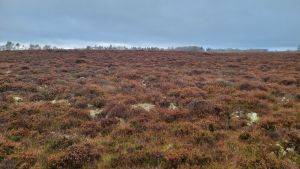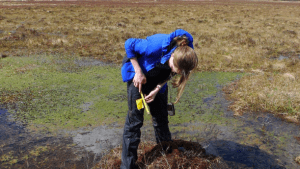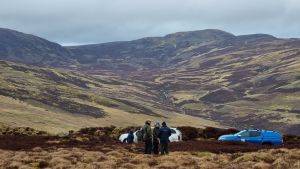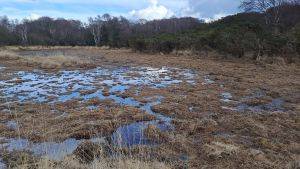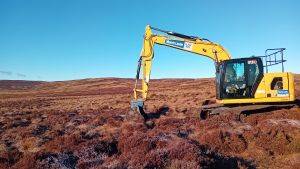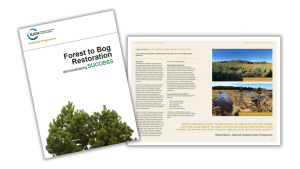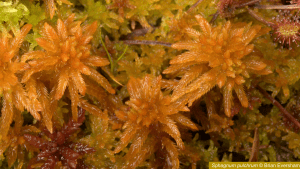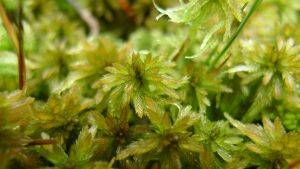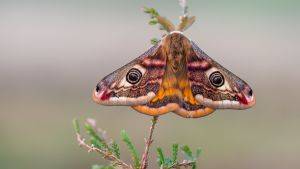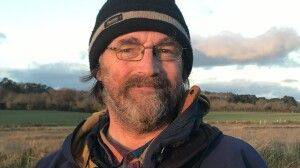Latvia is a relatively small peatland nation in comparison to Scotland. However, the ailments of Latvian peatlands are strikingly similar: pressures from forestry plantations, drainage, peat extraction for fuel and horticulture plus the added pressures of climatic change all resonated with me. The scale of the Latvian landscape feels vast and their forest and peatland habitats much larger and less fragmented than those in Scotland. They feel truly wild. Perhaps this is the way they once were in the UK?
Lake Kaņieris
Working as a peatland ecologist I was of course pleased when we reached the middle of the trip and it was finally ‘Bog Day’! In the morning we visited a restored lake with a peatland mosaic of reeds and calcareous fen. The reeds buzzing with Bearded and Penduline tits which eluded our binoculars. Lizzards and frogs sunbathed in the open fen. The waters were full of Charophytes and the surface skimmed by Fen raft spiders. Our guide, Jānis Ķuze (Nature Conservation Agency), described the failed attempts to drain this land for agricultural gain in the Soviet era and the subsequent reversion to wetland habitats. Water levels are now carefully controlled with a series of sluice gates to maintain an optimal water level in the wetland whilst preventing flooding of surrounding land. Their operation is also carefully controlled to allow fish migration between this important spawning habitat and the Baltic Sea.
Due to the lingering effects of historic drainage, some light management of the vegetation is required to maintain the designated habitats of open, calcareous fen and alkaline freshwater. Reeds are cut and used for thatching (a traditional, cultural use of such vegetation) and scrub encroachment around the edge of the reserve is prevented by cutting seedlings.
Ķemeri National Park
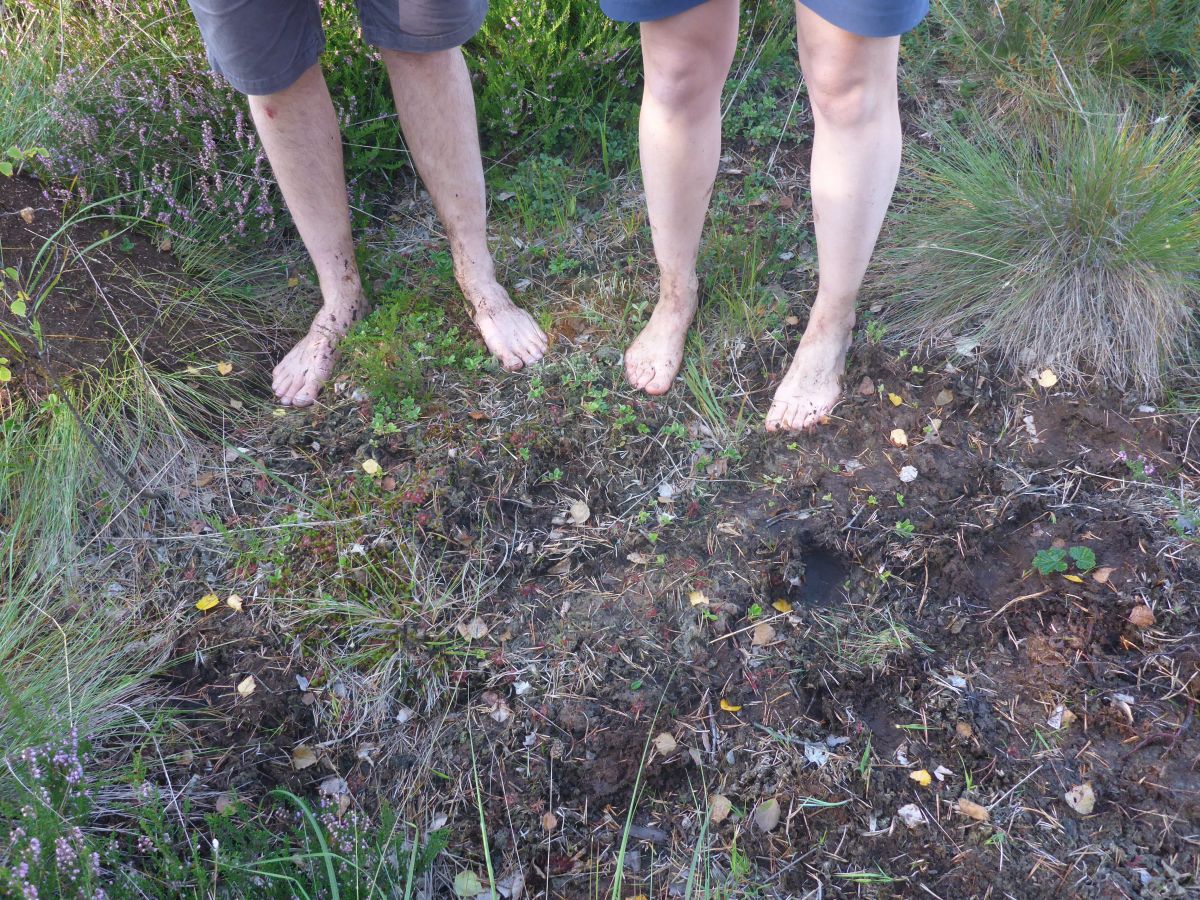 In the afternoon we visited one of the largest raised bogs in Latvia, Ķemeri (6,192ha). The main part of the peat dome had been preserved largely due to the value of the ‘ecosystem services’ it provides the nearby spa town of Júrmala. The interaction of acidic water from the bog reacts with the basic bedrock yielding sulphuric groundwater which is hailed as the most valuable medicinal product of the region. In the 18th and 19th century, the town of Júrmala developed as a small string of spa resorts along the Baltic coast, built around springs of this sulphur rich water emanating from the bog. Wealthy land owners from Riga would visit Júrmala to relax in the spa resorts and during Soviet times, top communist union officials were even rewarded with holidays in the area.
In the afternoon we visited one of the largest raised bogs in Latvia, Ķemeri (6,192ha). The main part of the peat dome had been preserved largely due to the value of the ‘ecosystem services’ it provides the nearby spa town of Júrmala. The interaction of acidic water from the bog reacts with the basic bedrock yielding sulphuric groundwater which is hailed as the most valuable medicinal product of the region. In the 18th and 19th century, the town of Júrmala developed as a small string of spa resorts along the Baltic coast, built around springs of this sulphur rich water emanating from the bog. Wealthy land owners from Riga would visit Júrmala to relax in the spa resorts and during Soviet times, top communist union officials were even rewarded with holidays in the area.
Only small areas of this bog had been exploited and we visited one such area which has now been restored as part of a LIFE project. Due to the stingy baggage allowance of our budget Ryanair flight, many of us were without wellies and ended opting for some barefoot bog-trotting which was quite an experience: soft peat and moss between your toes, the prickle of sedges and the squelching of water! The restoration area was seeking to recover an area suffering from surface-milled peat extraction. Surface milling aims to dry out the peat with a dense network of drains and then ‘hoover’ the dry peat from the surface of the milling field. This creates a deeply drained and flat surface which poses unique challenges for restoration. The Latvian’s chose to focus on simply restoring the hydrology within the peat by blocking the drainage channels. No virgin materials such as plastic piling are used, with peat dams being the favoured approach, and the results are encouraging. They took a proactive approach to all other aspects of the restoration such as re-creating a varied micro-topography from the flat surface or introducing a suitable suite of peatland plant species. In the UK, we often struggle with controlling invasive plant species on drier parts of the recovering bog or ensuring that suitable species are present through direct re-introduction. This is less of a concern for the restoration at Ķemeri and the peatland seems to be recovering quickly with good coverage of the desired peatland vegetation. Rarities in the UK like the Bog Rosemary (Andromeda polifolia) are abundant. We even found Scheuchzeria palustris which is known commonly as the ‘Rannoch Rush’ here in Scotland and only found on a couple of sites within Rannoch Moor!
I asked if methane emissions were a concern from the large areas of standing surface water before us. The reply was an emphatic ‘No’- intact Latvian peatland systems typically have large pools of standing water and, in the long term, the potential greenhouse gas emissions from these pools will be paid back by 100s of years of carbon sequestration by the restored bog. Perhaps in the UK, we are too tangled up in the micromanagement of our sites, tinkering on the small scale and longing to satisfy short-term targets? Perhaps we too should play the long game…
The relative inaccessibility of Ķemeri bog (due to a lack of drainage) had the added bonus of protecting pristine examples of boreal forest on mineral islands within the bog from human influence. These islands, slowly being swallowed as the peat layer grows, will eventually become engulfed in the next 4-5000 years. But for now, they represent some of the best and least disturbed examples of habitat for Capercaillie and Black Grouse.
Kalnansi Mire
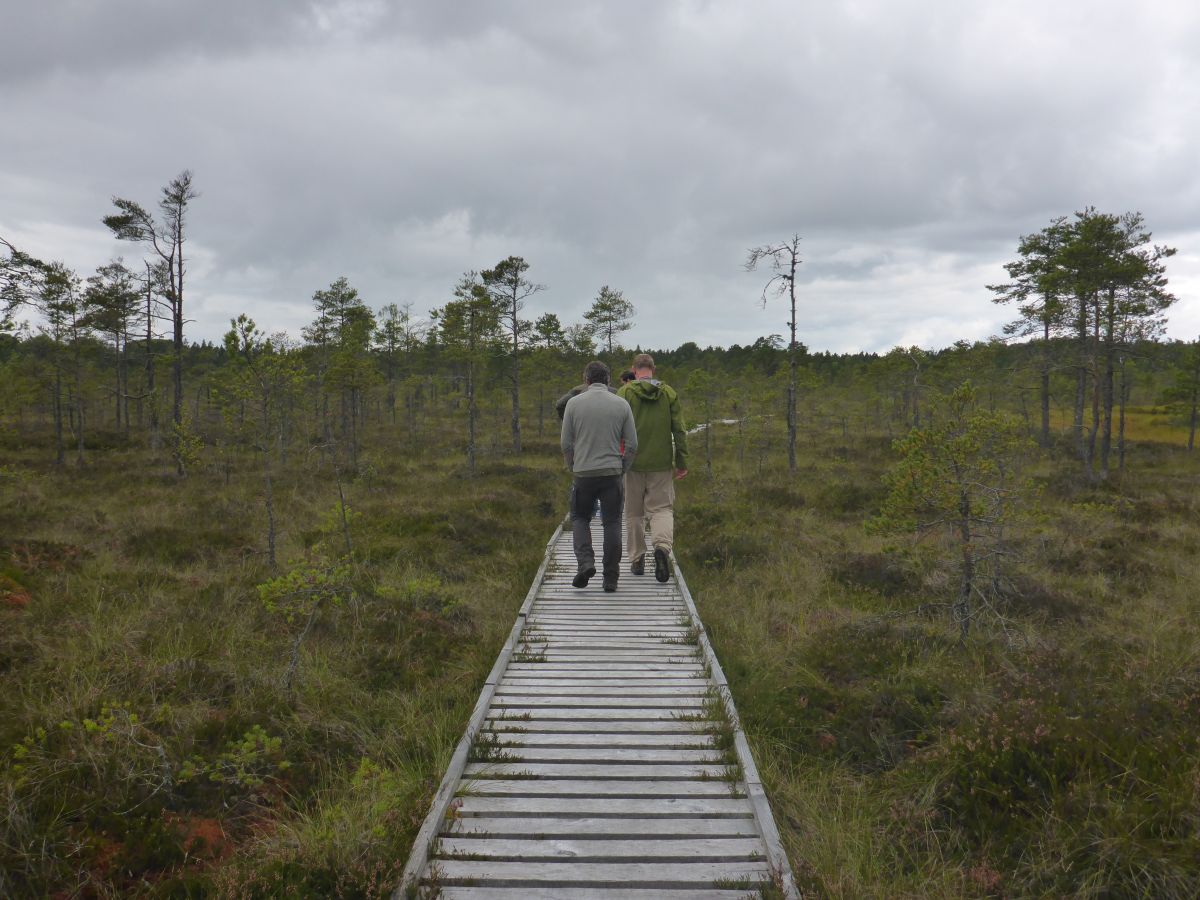 On Friday, with the rest of the group all being enthusiastic peatland converts, we had the opportunity to visit another bog at Kalnansi. We enjoyed a quick stroll around the boardwalk and the opportunity to keep our feet dry whilst enjoying the wetland habitat. Even in remote areas, encouraging a positive experience with nature and promoting a connection with the environment seems to be truly important to the Nature Conservation Agency and the State Forest Service. At all of the sites we visited, there was good interpretation available in Latvian with an English translation. Towers on many of the publicly accessible reserves provide the visitor with a view over the landscape which really allows you to appreciate how it connects with surrounding habitats and just how varied wetlands can be at this large scale.
On Friday, with the rest of the group all being enthusiastic peatland converts, we had the opportunity to visit another bog at Kalnansi. We enjoyed a quick stroll around the boardwalk and the opportunity to keep our feet dry whilst enjoying the wetland habitat. Even in remote areas, encouraging a positive experience with nature and promoting a connection with the environment seems to be truly important to the Nature Conservation Agency and the State Forest Service. At all of the sites we visited, there was good interpretation available in Latvian with an English translation. Towers on many of the publicly accessible reserves provide the visitor with a view over the landscape which really allows you to appreciate how it connects with surrounding habitats and just how varied wetlands can be at this large scale.
The Future?
A number of LIFE projects have resulted in the restoration of raised bogs in Latvia and it is unfortunate that we are about to lose access to this funding in the UK as we prepare to exit the EU. Hopefully LIFE funding can continue to restore Latvia’s peatlands, as per the excellent project at Ķemeri, but for some sites, either under agricultural use or being commercially extracted, the future seems uncertain.
The culture of NGOs and environmental lobbying which we are reliant on in the UK to provide challenge to government seems absent in Latvia. It could be argued that land managed by the state or by private individuals is sometimes conflicted with economic values. There is little discussion of ‘natural capital’ or ‘ecosystem services’.
Approximately 45% of all peatland soils in Latvia no longer support peatland vegetation (a similar value to those in Scotland). As a result not only are many services such as supporting water quality or biodiversity diminished but peatland CO2 emissions are twice as large as those from other sources (transport, industry etc) in the country (excluding land use). Peatlands therefore have a vital role to play in future discussions about the Latvia’s climate mitigation strategies. This also raises questions about how forested peat soils should be managed- at present, there doesn’t seem to be an appetite to restore peatlands which have been drained and planted with commercial forestry back to open bog, as is beginning to happen in some areas of Scotland (e.g. the Flow Country).
The importance of the economic market over ecological or intrinsic values is demonstrated by the continuation of peat extraction in the country. There is no market for peat in Latvia whilst in excess of 2million tonnes per year continue to be extracted. This is bolstered by the export of Latvian peat to over 95 countries, the majority of which is shipped across Europe, including to the UK, for horticultural use. Reducing demand for peat compost by buying sustainable alternatives and avoiding purchase of potted plants or food grown on imported peat soil is a small action which each of us can take, here in the UK, to reduce demand for peat. Not just for the sake of Latvian raised bogs but for Scottish ones too.
Report by: Emma Goodyer, IUCN UK Peatland Programme
Photo credits: Alison Austin

